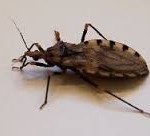Archive for September, 2015
Choking (Heimlich Maneuver)
Posted by: | CommentsChoking is a common but serious condition. Prompt and efficient care is the best way to help a choking victim. To ensure you don’t choke, make sure to take small bites when eating. Don’t try to talk and eat and the same time. Breathing in air with food in your mouth is the easiest way to choke. Being aware of these precautions is the perfect preventative solution.
Symptoms that an adult is choking:
- One or both hands brought up to clasp their neck.
- Motions from them alluding to the fact that they are choking.
- Panicked look on their face.
- Gasping for air and not getting any or a high pitch wheezing sound.
What to do if an adult is choking:
- Begin by asking the person, “Are you choking, I can help?”
- If they indicate that they are, move behind them and place your leg in between theirs to help support them.
- Locate the person’s belly button. (This can be done by placing your hands at their ribs and slide them down their sides until you reach the top of their hips. Move your hands to the front and their belly button should be right there.)
- Make a fist with your dominant hand and place the flat part of your fist (made up of your thumb and index finger) directly above their belly button.
- Clasp that fist and perform inward and upward thrusts. Consider making like the letter “J,” in and then up.
- Perform five separate and distinct abdominal thrusts.
- If this doesn’t remove the object, have someone call 9-1-1.
Continue the thrusts until the object is cleared or they become unconscious. If they become unconscious, immediately begin CPR.
Signs of a Heart Attack
Posted by: | CommentsMore men suffer from heart attacks than women, but more women die from heart attacks than men. I think the biggest reason is most women are not familiar of the heart attack signs for women. In many cases they are different than the signs for men. Why? The medical establishment is not sure, but symptoms do present differently in women, in most cases.
For men, we find they have weakness or numbness in their left arm, in some cases it could be in both arms. Chest pressure, as though someone was sitting upon their chest. Shortness of breath, breathing hard even though they may not be doing any physical activity. And lastly, perfuse sweating.
For women, the symptoms could be severe indigestion. A feeling of pain in between their shoulder blades or upper back. A stiffness in their jaw, nausea and sweating seems to be a common symptom for both men and women.
Did you notice that nothing associated to a women’s chest was mentioned? So most women feel they ate something bad, picked up something wrong (back pain) or stress of the job was getting to them and they maybe grinding their teeth (stiff jaw).
If you suspect a heart attack immediately call 9-1-1. If the person is not allergic to aspirin, give them one adult strength aspirin and have them chew it. Aspirin thins blood and may be able to get around any blockages. By chewing the aspirin, it begins to have an effect of thinning the blood within 4 minutes. If they swallow the aspirin it may take up to 14 -18 minutes before the effects begin.
Immediate medical attention can be the difference between life or death.
Amputation
Posted by: | CommentsAn amputation is the complete loss of a body part, such as the severing of a finger, toe, arm or leg. Always save and protect the amputated body part. Medical advances have made it possible for doctors to reattach these dismembered body parts.
Your first priority is to attend to the victim. Immediately begin steps to control any heavy bleeding. Use direct pressure upon the wound site. In most cases direct pressure will be sufficient to control the bleeding. Use a tourniquet only as a last resort measure, when you feel you can’t control the bleeding and so much blood has been lost that death may occur due to blood loss.
Once the bleeding has been controlled, then find the amputated body part. If possible rinse the item to remove any visible contamination. Then warp this body part with something clean like a dressing or fabric. It’s best to keep this tissue dry. So if possible, place the amputated part into a plastic bag and seal it.
Keeping this body part cool will help preserve it until medical attention is available, but it is important not to freeze the tissue. Place the protect body art into a container that has ice, but make sure the amputated tissue does not have direct contact with the ice. Again keeping it cool is the point, but not so cold that it freezes and creates damage to the tissue.
Immediately transport the patient and the amputated item to a medical facility for further treatment.
Signs of a Stroke
Posted by: | CommentsA stroke occurs when a part of the brain is deprived of oxygen. This commonly occurs when a blood clot gets caught in a blood vessel, or when a blood vessel ruptures, known as an aneurysm. In both situation brain cells begin to die.
Signs of a stroke may include:
- Numbness or weakness of the face, arms or legs, usually on one side of the body.
- Difficulty in speaking due to the numbness of one side of the tongue.
- Sight difficulty as well as balance problems.
- A severe headache.
- Confusion.
A simple way to check if you suspect a stroke is to have the patient, smile, lift both arms and speak a simple sentence, such as where do you live? Consider using the acronym FAST.
F – Face
A – Arms
S – Speech
T – Time
If they have any problems with these items, especially if they occur on one side of the body, call 9-1-1 immediately.
This is a true medical emergency and time is a major factor. Doctors in the emergency rooms have medications that can have a dramatic effect and help in a patient’s recovery. Never give aspirin to a possible stroke victim. Aspirin thins blood, though may be good to help with a heart attack, thinning the blood with a victim of a hemorrhagic stroke, could lead to death.
10 Ways You Could be Poisoning Your Child?
Posted by: | CommentsYou may be surprised by the different types of lead surfaces you may currently have in your home. Car keys, candles and old toys, to name a few. To help prevent lead poisoning in children, have them wash their hands and the toys they play with frequently. A great way to check the safety of your child’s toys or surfaces your child may come in contact with are, purchasing a Consumer Lead Testing Kits, which can be found at most hardware stores.
Lead poisoning can lead to learning disabilities, anemia, growth problems, attention deficits and aggression behavior issues when children have had direct contact with lead or lead surfaces. Poison Control warns all consumers that lead can still be found in a variety of products available to children. Lead poisoning is a serious health and safety issue for children.
To create a safe environment for your child, here are 10 lead poisoning prevention tips:
- Do not allow children to chew painted surfaces on toys.
- Report chipped or cracked paint to the landlord in homes older than 1978.
- Use Duct Tape to cover peeling or chipping paint surfaces.
- Have your doctor test your child for lead even if they seem healthy.
- Jewelry from Mexico such as watches, bracelets and religious items have found to contain lead.
- Car and house keys contain a small amount of lead. Do not allow babies to chew on them.
- Mexican candies that contain chili or tamarind have been found to also contain lead.
- Run the water faucet for several minutes before using for infant formula preparation. Better yet, use bottled water.
- Avoid consuming canned foods from outside of the United States.
- Many imported folk or home remedies contain lead such as: Pay-loo-ah, Azarcon, Maria Luisa, Liga, Alazron, Greta, Coral, Rueda, Ghasard, Bali Goli, Kandu, farouk and bint al zahab.
US Poison Control Hotline Number: 1-800-222-1222. For more information about poisonings, visit the Poison Control website at www.poison.org.
Difference Between a Cold or Flu
Posted by: | CommentsThe days are getting shorter and the weather is beginning to chill. The cold and flu season is upon us. With more activities inside and closer physical contact with others, this increases your potential of acquiring a bacterial of viral infection.
In general, the flu is worse than the common cold, and symptoms such as fever, body aches, extreme tiredness, and dry cough are more common and intense. Colds are usually milder than the flu. People with colds are more likely to have a runny or stuffy nose (1).
The best form of prevention, during these times, is to frequently wash of your hands. Most germs are spread through skin contact. Touching of surfaces such as computers, desks, chairs and hand-shaking can help in the spread of disease.
Once these germs or bacteria get on your skin it can easily transition to other areas of your body. Rubbing your eyes or nose, handling foods such as sandwiches, burgers or burritos, gives these germs an easy opportunity to get inside your body.
Once inside, these germs can multiple and cause you to become ill. Your best defense is the frequent cleansing of your hands. Plain soap and warm water are the simplest and best form of cleansing. Spend time in creating a good lather with the soap. Make sure to rub in between each finger and under your fingernails. It is best to wash for at least 15 to 20 seconds or as long as it takes to sing the childhood song, “Twinkle, twinkle little star”.
This can be a fun way to get children involved in more frequent hand washing.
Dangers of the Kissing Bug
Posted by: | Comments Traitomines also known as the Kissing Bug is a small 3/4 inch blackish/brown bug that bites around the mouth, eyes or nose and is found in both North and South America.
Traitomines also known as the Kissing Bug is a small 3/4 inch blackish/brown bug that bites around the mouth, eyes or nose and is found in both North and South America.
This insect is attracted to the odors which humans release when they breathe and is the reason why most of its bites are in or around the mouth area. This bug enjoys being amorous during the evening and usually strikes during the night when you are sleeping. During this love bite, the kissing bug releases its own saliva into the wound which acts as a numbing agent. Some people can have a severe allergic reaction to the saliva.
The kissing bug can also carry Chagas disease which comes from a parasite that lives in the digestive tract of the insect. Chagas can cause damage to your heart and central nervous system. The kissing bug has never been known as a conscientious lover, so after having its way with you, this bug will actually urinate or defecate in or around the bite site. This could lead to the parasite entering your body and can have life threatening consequences.
If you believe you’ve been bite by a traitomines (the Kissing Bug)seek immediate medical attention.
Truth on the 5 Second Rule
Posted by: | Comments We’ve all heard it before. If you drop food on the floor or ground, as long as you retrieve it within 5 seconds, it is still good enough to eat. The truth is it’s probably not even safe to follow a 1-second rule.
We’ve all heard it before. If you drop food on the floor or ground, as long as you retrieve it within 5 seconds, it is still good enough to eat. The truth is it’s probably not even safe to follow a 1-second rule.
The transfer of bacteria from a contaminated surface, such as the kitchen floor to food, is almost instantaneous. Consider that these surfaces at home are the same as you walked upon at a public restroom or a gas station. The germs and bacteria from these locations are on the bottom of your shoes and can easily transfer onto other surfaces.
In one study, a scientist from Clemson University dropped pieces of bologna and slices of bread on the surfaces for as little as 5 seconds and as long as 60 seconds. After just 5 seconds, both food types had already picked up over 1,700 bacteria, and 10 times that amount after 1 minute.
Any type of food, whether dry or moist, should always be discarded if they ever touch the ground. Depending upon the type of item, it may become an unplanned treat for your other family members (dogs).
Dangers of Rip Tides
Posted by: | CommentsPeople are spending time at the beach enjoying the sun and ocean now that summer is here. What most of us don’t know is that the most successful killer in the ocean is not the great white shark or deadly jellyfish. The most dangerous killer is the ocean itself.
Over 100 beach-goers drown each year just in the United States. Most of these drowning have occurred because of a phenomenon called rip tides or rip currents.
Rip currents occur when waves breaking at different parts of the beach carve out channels in the sand where the water returns towards the ocean. As these channels build the water rushes through canals with greater force. These currents can easily pull a victim, even in waist depth water, out into the ocean. Those who chose to fight and swim against this current end up exhausted and possibly dead.
If you happen to be caught in one of these currents please follow the recommendation of the National Weather Service:
When at the beach:
• Whenever possible, swim at a lifeguard-protected beach.
• Never swim alone.
• Learn how to swim in the surf. It’s not the same as swimming in a pool or lake.
• Be cautious at all times, especially when swimming at unguarded beaches. If in doubt, don’t go out.
• Obey all instructions and orders from lifeguards. Lifeguards are trained to identify potential hazards. Ask a lifeguard about the conditions before entering the water. This is part of their job.
• Stay at least 100 feet away from piers and jetties. Permanent rip currents often exist alongside these structures.
• Pay especially close attention to children and elderly when at the beach. Even in shallow water, wave action can cause loss of footing.
If caught in a rip current:
• Remain calm to conserve energy and think clearly.
• Never fight against the current.
• Think of it like a treadmill that cannot be turned off, which you need to step to the side of.
• Swim out of the current in a direction following the shoreline. When out of the current, swim at an angle–away from the current–towards shore.
• If you are unable to swim out of the rip current, float or calmly tread water. When out of the current, swim towards shore.
• If you are still unable to reach shore, draw attention to yourself by waving your arm and yelling for help.
If you see someone in trouble, don’t become a victim too:
• Get help from a lifeguard.
• If a lifeguard is not available, have someone call 9-1-1.
• Throw the rip current victim something that floats–a lifejacket, a cooler, an inflatable ball.
• Yell instructions on how to escape.
• Remember, many people drown while trying to save someone else from a rip current.







